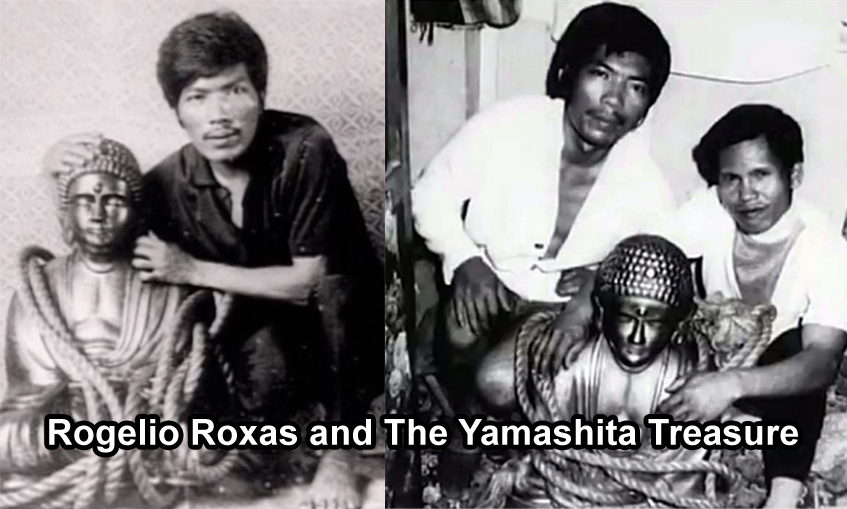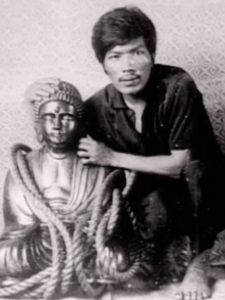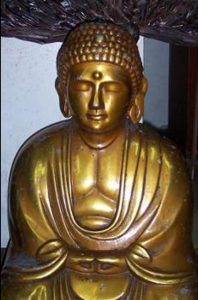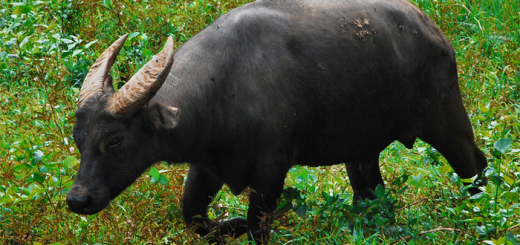Rogelio Roxas and The Yamashita Treasure

The legend of the Yamashita Treasure has captivated treasure hunters and historians alike for decades. Said to be the spoils of World War II hidden by Japanese General Tomoyuki Yamashita, this treasure has sparked countless theories and stories. Among those drawn into its orbit is Rogelio Roxas, a Filipino who claimed to have unearthed part of this legendary treasure. His story intertwines with the myths and controversies surrounding Yamashita’s hoard, making for a captivating tale of ambition, betrayal, and the elusive nature of fortune.

Rogelio Roxas and the Gold Buddha – Source: Roxas Family
The Legend of the Yamashita Treasure
According to legend, as World War II came to an end, Yamashita ordered the hiding of vast riches looted from Southeast Asia. These treasures, believed to include gold bars, jewels, and artifacts, were said to be buried in various locations in the Philippines. Despite numerous expeditions, the treasure remains undiscovered, leading to numerous theories about its fate and the reasons behind its concealment.
Rogelio Roxas: The Treasure Hunter
Rogelio Roxas’s journey began in the 1970s when he claimed to have stumbled upon a hidden entrance to a cave in the Philippines. Following local lore and rumors, he allegedly discovered gold bars and other valuables, igniting a quest that would change his life forever. His claims attracted attention, and he became embroiled in a complex legal and political battle that would ultimately define his legacy.
Roxas’s initial excitement quickly turned to frustration as he faced skepticism from authorities and challenges from those who doubted the existence of the treasure. He also encountered alleged attempts at intimidation, which suggested that powerful interests wanted to suppress the truth about Yamashita’s treasure.
The Legal Battle
In the 1980s, Roxas’s claims took a dramatic turn when he filed a lawsuit against the Philippine government, claiming ownership of the treasure he had supposedly uncovered. His case drew national and international attention, exposing the tangled web of corruption, conspiracy, and historical amnesia that often surrounds treasure hunts.
During the proceedings, Roxas provided photographs and testimonials to support his claims, but the government contested his story, arguing that the treasure belonged to the state. The legal battle stretched on for years, showcasing not just Roxas’s personal struggle but also the broader themes of justice, nationalism, and the lingering scars of colonialism.

Replica Buddha statue, of a solid gold statue, that was returned by Ferdinand Marcos after he allegedly had his armed troops steal the original gold statue at gunpoint from Rogelio Roxas and family. The statue remains in the Baguio courthouse waiting to be claimed by Roxas’s son, Henry. It is a lead copper/bronze overlay statue. Photo taken in 2003.
Photo from wikipedia – Keith Brooks
Theories Surrounding the Treasure
Various theories have emerged regarding the Yamashita Treasure and its whereabouts:
Buried Treasure – The most popular theory suggests that vast caches of gold are buried in remote areas of the Philippines, hidden within caves, tunnels, or under natural landmarks. Many believe that locals or Japanese veterans may still guard secrets about these locations.
Looted Wealth – Some argue that the treasure was looted by those who discovered it and that its existence is merely a myth, fueled by stories of wealth and fortune. This theory posits that much of the treasure has already been dispersed into the black market.
Government Involvement – Conspiracy theories abound regarding government officials and military personnel who may have had access to the treasure and have actively worked to conceal its existence. This perspective often points to the cultural and political motivations behind such secrecy.
A Cursed Fortune – A more mystical angle suggests that the treasure is cursed, bringing misfortune to those who seek it. Stories of failed expeditions and untimely deaths have added to this narrative, creating a sense of dread surrounding the treasure’s legacy.
Rogelio Roxas Legacy
Despite the challenges he faced, Rogelio Roxas’s story remains a symbol of the enduring human desire for adventure and the pursuit of fortune. His life reflects the complexities of post-colonial identity in the Philippines, where the search for wealth often intertwines with questions of justice and national pride.
Roxas’s claims and the subsequent legal battles raise important questions about historical memory and the legacies of war. As treasure hunters continue to search for the elusive Yamashita Treasure, Roxas’s journey serves as a reminder of the personal stories that often lie at the heart of historical legends.
The tale of Rogelio Roxas and the Yamashita Treasure is not just about gold and riches; it is a rich tapestry of ambition, mystery, and the human spirit’s unyielding quest for answers. While the treasure itself may remain hidden, the stories surrounding it continue to inspire, intrigue, and provoke thought—leaving us wondering what other secrets the past might still hold. As new generations of treasure hunters embark on their quests, the legacy of Rogelio Roxas serves as both a warning and an inspiration in the ever elusive pursuit of fortune.
References:
https://en.wikipedia.org/wiki/Rogelio_Roxas
https://en.wikipedia.org/wiki/Rogelio_Roxas#/media/File:Golden_Budda_returned_to_Rogelio_Roxas_by_Ferdinand_Marcos.JPG










